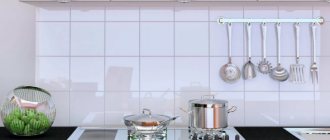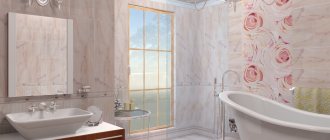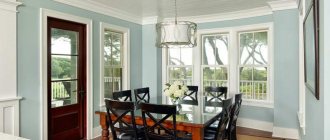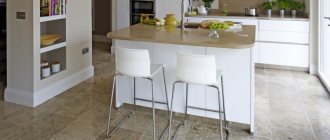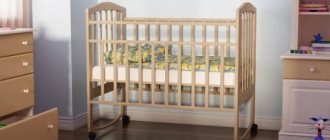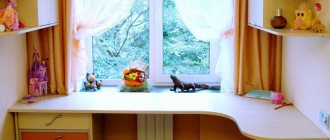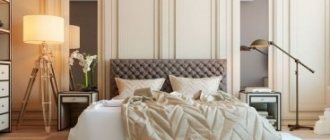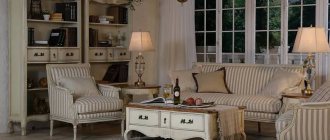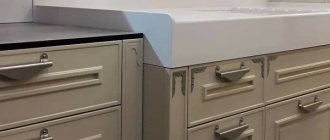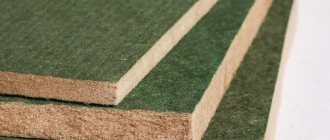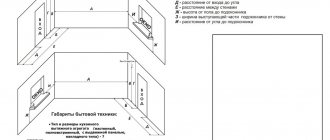MDF is a type of material that is actively used in various construction fields, most often used in everyday life for the manufacture of furniture. Essentially, MDF board is pressed wood.
MDF is an excellent material, its dimensions are ideal for making furniture, tables, cabinets, walls, baseboards and much more.
MDF panels, which are used for wall cladding and for forming cabinet furniture, are obtained by sintering under pressure. It is based on a waste wood resource, namely small chips, as well as an adhesive to form a complete board.
Length
The typical length of a wall panel is 2.62 m, while some manufacturers have launched products with lengths of 2.44 and 2.8 meters.
The parameters and sizes of the boards vary depending on the MDF manufacturer. So, for example, the popular brand Kronospan produces panels in sizes 2600X200 mm, 2600X325 mm, 2600X153 mm and 2600X200 mm.
The world-famous manufacturer HDM offers panels with parameters of 1300X198 mm and 2600X198 mm. Finally, the Russian one produces panels in a single size 2600X238.
Each manufacturer (within its size range) produces a wide variety of panels, differing in texture and color.
Types of material
There are several of the most popular options for wood fiber panels, which differ in some ways.
Decorative classification:
- Laminated. LMDF are modern materials that are in great demand due to their stable characteristics and a wide selection of colors and textures. A cheaper variety is laminated.
- Veneered. The decorative surface is formed by gluing a thin slice of valuable wood. Such medium-density slabs have a significant thickness.
- Cork. This is the most expensive option. The panel is based on MDF, which gives the product the necessary parameters, and the top layer is made of natural material.
Laminated boards are the most durable, veneer and cork are classified as environmentally friendly products, and painted panels with 3D texture are an exclusive option, but they are not suitable for every interior.
Division by area of use:
- Wall. This category includes slatted products, sheet and tiles. Regardless of the shape, all parts are used for cladding vertical surfaces inside the house.
- Ceiling. This group usually includes materials of small thickness, mainly slatted and sheet. Low weight reduces the load on the suspended structure.
- Furniture. This option is used for the production of the main parts of interior items: facades, decorative inserts and overlays. Although the products can be used for the manufacture of all furniture parts, including children's furniture.
As such, there is no clear distinction between the purposes of MDF; furniture panels are often used to decorate walls and ceilings, and thin wall material is used for furniture decoration.
MDF is also distinguished, which has additional moisture resistance and fire resistance. These indicators are achieved through the use of special modifying additives in production.
Thickness
Depending on the brand of the manufacturer and the chosen model, the thickness of MDF varies from 3 to 30 mm. In addition, some enterprises produce veneered modifications, the thickness of which reaches 60 mm.
Thanks to this variety, each consumer can always choose the best option taking into account the dimensions of their room.
By the way, the thickness of the panel is quite important when choosing a suitable finishing material: the weight of the product and the load that it can withstand depend on it.
Standard panels weigh:
- with a thickness of 3 mm – 16 kg;
- 6 mm – 31 kg;
- 12 mm – 60 kg;
- 22 mm – 106 kg;
- 28 mm – 142 kg.
Manufacturing technology
A special technology is used to prepare this material.
Procurement of raw materials
Initially, the resource is harvested. Now the company purchases wood chips or collects them from the production workshop.
The type, quantity of chips and quality of wood depends on the required sizes of MDF sheets and their price changes accordingly.
Wood shavings
Recycled materials are not always used to prepare wood chips; large logs are often taken, which are first cleared of bark and placed in special chopping devices. Next, the chips are washed and heated with steam.
Fiber preparation
Pre-cooking of fibres.
The resulting material is placed in a refiner, which allows the resulting mass to be combined with lignite, as well as some resins, which allows for a bond between wood particles.
Prices for MDF panels depend on the size, type of material, and resins used; the final material can be assessed by photo before purchasing. Next, air is removed from the raw material, and it is dried. Ultimately, the result is an environmentally friendly material, since synthetic components are not used;
Creating a slab
The size of the MDF board and sheet at this stage depends on the size of the walls of the equipment. Essentially, different sizes can be created as long as strength is not lost. The device independently levels the raw materials and creates an even plane, like a carpet, then the edges are trimmed to give an even shape.
Now the pressing process begins. Its main task is to eliminate air inside the stove, which ensures better technical performance.
Final pressing
Now the final stage of preparation begins, when the material is placed under the main press.
Next, the slab is trimmed using a dividing saw. Ultimately, the finished MDF sheet is dried for 30 minutes.
The popularity of the material is due to its affordable price, high strength, and the ability to simply create wide sheets of wood.
Its main properties:
- qualitatively high density indicators - about 800 kg/m3;
- the material is moisture resistant. It is used to produce bathroom furniture;
- thanks to resin impregnation, MDF is not damaged by harmful microorganisms ;
- is resistant to high temperatures;
- the material always remains quite flexible. Resistance to destruction 15 MPa.
Weight
The external dimensions and thickness of the panel play a key role. Weight according to dimensions is given in the tables above.
Let's see how the weight of an MDF panel measuring 2,800*2,050 mm (the maximum value on the market) will change, depending on the thickness of the product:
- 3 mm – 16 kg.
- 6 mm – 31 kg.
- 12 mm – 60 kg.
- 22 mm – 106 kg.
- 28 mm – 142 kg.
It is worth noting that the weight of the decorated panels will vary slightly upward.
MDF and walls
MDF panels are an absolutely natural material: the boards are made from wood shavings and sawdust, crushed, dried and tightly pressed together using paraffin and lignin as a connecting compound. Thanks to the melamine film, the panels can imitate any surface, but most often they are given maximum resemblance to natural wood. The shades of the material can be very different.
The following also speaks in favor of MDF on walls:
- material strength,
- ease of installation
- the ability to implement almost any design ideas with the help of such slabs
At the same time, the surface of MDF - the laminating layer - is easily restored, which not every building material can boast of. The panels are as natural as possible, so they can even be used in children's rooms. In addition, MDF on the walls improves heat and sound insulation in the room.
The disadvantages of panels made from fine particles include:
- The need to mount them on a frame, which hides several centimeters from the area of the room.
- Also, the material should be kept away from potential sources of ignition and moisture - like any wood, MDF is afraid of water and fires.
Dimensions depending on application
Depending on the area of application of MDF, the dimensions of the facing material also change.
Here you can derive the following standards:
Wall panels
The standard length of a wall panel is 2.6 meters, however, some manufacturers produce products with a length of 2.44 and 2.7 m. The width can vary between 150-900 mm.
Depending on the width, panels are divided into types P-1, P-2, P-3, P-4, P-5 (100, 125, 150, 175, 250). With panel thickness 3-30 mm. The thickness of veneered MDF can reach 60 mm.
Types of wood panels
According to external characteristics, slabs are divided into the following types:
- Veneered: covered with wood veneer, creating a surface almost indistinguishable from natural wood, but at the same time costing several times less.
- Painted: are produced by applying paint that spreads over the surface of the slab, which guarantees the absence of streaks, stains, and bald spots.
- Laminated covered with a durable film that adheres very tightly to the surface of the panel, providing additional protection from moisture and dirt. This coating can be either matte or glossy.
- With 3D effect: the latest word in MDF surface design, allowing you to create three-dimensional designs.
The use of ceiling panels is much cheaper than suspended ceilings, and their installation creates less dust and dirt than when installing plasterboard. If you plan to install electrical wiring with open areas under the slabs, then the cable must be hidden in an insulating corrugation.
Brick wall panels can be used to varying degrees, and you can find out how to do it correctly in this article.
Main manufacturers
Today, a large number of companies are engaged in the production of such sheets. But among them, the most popular are products from a number of domestic and foreign manufacturers.
KRONOSPAN
An Austrian company established more than 100 years ago. At the beginning of 1959, the first wood processing plant was opened in Salzburg. Today, the concern's subsidiaries are located in different countries. Such products are also produced in Russia. The rack sheets have dimensions:
- Length -2600 mm.
- Thickness - 7-14 mm.
- Width - 153−325 mm.
Dimensions of sheet products - 2800×2070, 2800×1040 mm. Thickness - 6−28 mm.
HDM
This German company began its activities back in 1959. It took her nine years to create her own process for making panel parts. Today, the company's products are very popular in the world. It produces MDF panels with dimensions:
- Thickness - 6−12 mm.
- Length - 900−4200 mm.
- Width - 168−300 mm.
Kronostar
In Russia, this enterprise was opened 16 years ago. Its basis was the well-known company SWISS KRONO GROUP. All products are manufactured only on foreign equipment and are of high European quality. Wall plates have standard dimensions: 2600×250×7 mm.
Characteristic
MDF, what kind of material is it? This material owes its name to the British. It was they who came up with MEDIUM DENSITY FIBERBOARD - MDF.
The use of MDF panels, the wall dimensions of which are quite varied, is to perform finishing finishing work using this building material.
No renovation of an apartment or office can be done without them. Public institutions also widely use MDF, which is easy to use and easy to cut and install. It also reacts neutrally to temperature changes and the influence of direct sunlight.
The composition of the material is also beyond doubt. What is better for furniture, MDF or chipboard? Unlike chipboard, which contains more chemical components, MDF is produced using materials that are harmless to human health. The basis of MDF is crushed wood.
Comparison with a tree
Some branded MDF products can be more expensive than non-branded natural wood products. Here the conditions are dictated by the laws of the market.
If you compare the cost of products from the same manufacturer, the cost of natural material will be more expensive.
MDF sheets must be cut, edges glued, fittings added and furniture assembled. Natural wood will have to not only be sawed, but also planed, planed, planed, milled, sanded, loaded, trimmed, assembled, and glued.
Fitting, gluing of veneer with subsequent fitting of parts, additive for fittings, assembly, checking, disassembling and sending to the paint shop. This is also a long process, which can consist of 15 cycles. Next, you need to finish painting, sanding, and polishing. Even in terms of time, furniture made from MDF is made much faster.
To work with wood, you need a machine park. Not everyone can do this. Therefore, it is more profitable and quick to produce furniture from MDF, which has a long service life.
